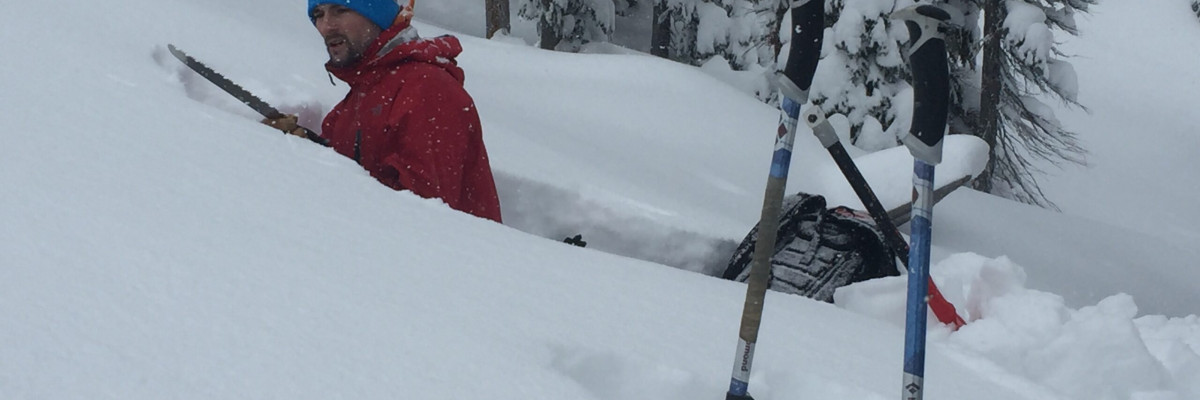The avalanche danger in the West Central Montana backcountry is MODERATE. Natural avalanches are unlikely, human triggered avalanches are possible. Heightened avalanche conditions may exist in isolated terrain.
Good morning and happy powder Thursday, this is Logan King with the West Central Montana Avalanche Center’s backcountry avalanche advisory for Thursday, December 17th. This information is the responsibility of the Forest Service and does not apply to operating ski areas and expires at midnight.
WEATHER AND SNOWPACK
As of 5am this morning mountain temps are approximately 10 degree fahrenheit, currently all anemometers are down and we don’t have any windspeed data. Mountain ranges in the advisory area have seen 5-12 inches of new snow in the last 24 hours.
Travis and I rode into Twin Lakes in the Bitterroot yesterday and found about a foot of new low density snow. This new snow is sitting on a crust but appears to be bonding well. The primary problem that we were seeing was loose snow avalanches. However under the crust was a bit of an anomaly. We found very saturated snow between crust layers from the rain event a few weeks back in mid elevation pits. The two very wet layers are lying between three very dense crusts. Given current conditions this is an unusual situation in the snowpack, and an unusual snowpacks result in unusual avalanche problems so keep an eye on this layer (video). However, the good news was this layer was rapidly being buried deeper in the snowpack and was not very reactive in stability tests.
The second concern that we have in the region are storm slabs. The new snow is sitting on a crust in many areas in the region and the subtle layers/interfaces in the storm snow were not very reactive in our stability tests but with more load overnight may become more sensitive. Remember, anytime a significant load is added to the snowpack it warrants cautious evaluation because the snow needs time to adjust to a new load.
Lastly, facets continue to persist on cold shaded slopes or in shallower snowpacks. They are not nearly as reactive but they can still be found and will potentially be more reactive under the new load. The only way to know if these persistent weak layers are present is to dig.
WEATHER AND AVALANCHE FORECAST
Currently it is partly cloudy and calm but snow is forecasted later in the afternoon and into tonight with the possibility to turn to rain as snow levels rise throughout the region. Loading is expected to continue later today and through the weekend. Winds are also forecasted to increase with the warmer and overrunning frontal passage which have the potential to further increase avalanche danger.
I will issue the next advisory on Saturday, December 19.
























